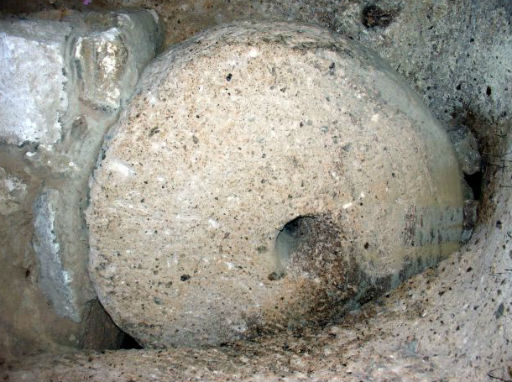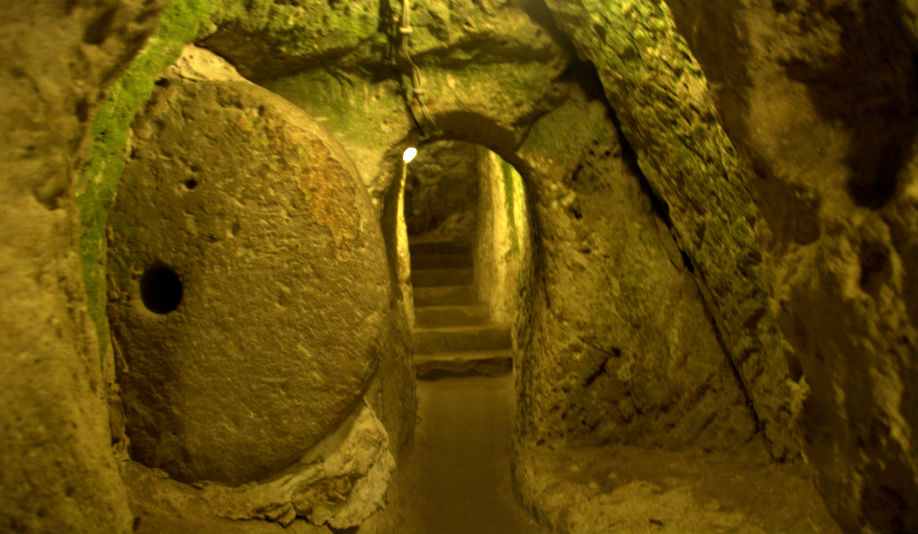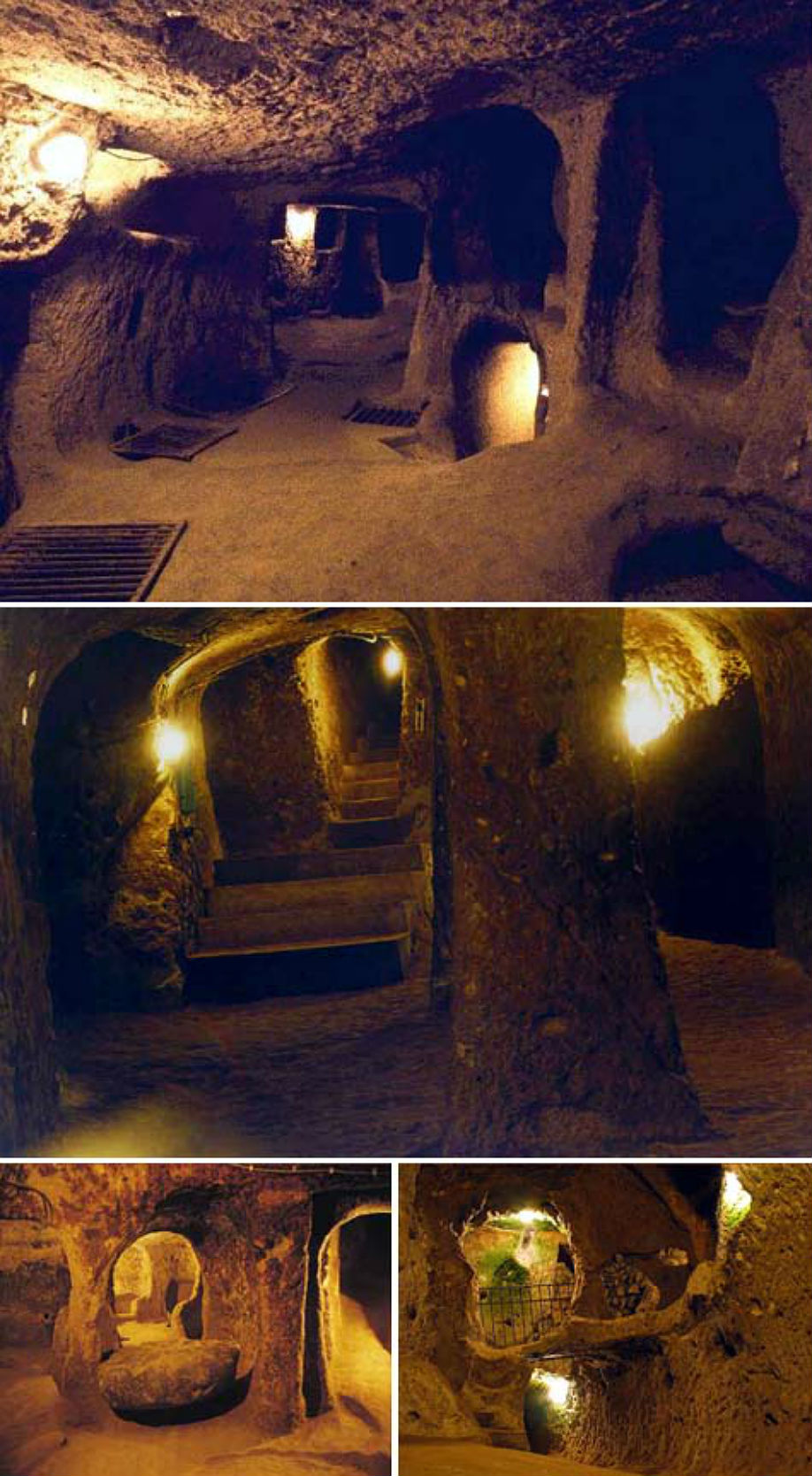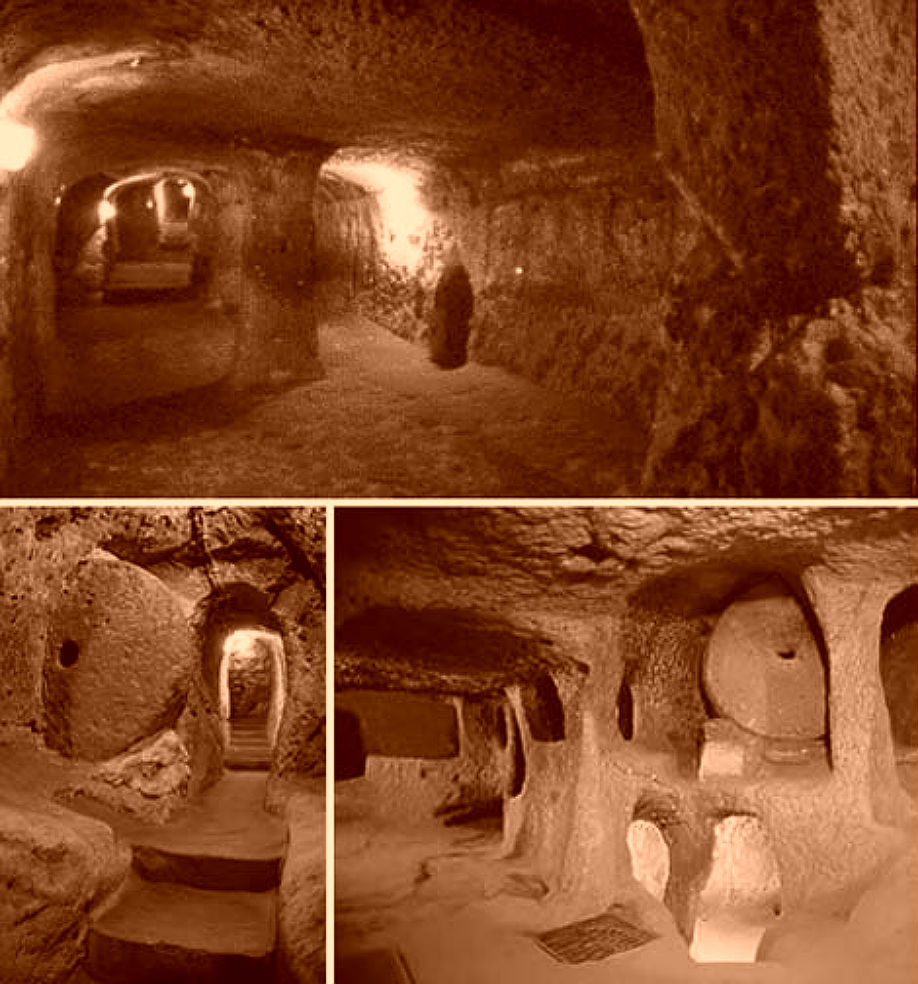Derinkuyu Underground City is an ancient multi-level underground city of the Median Empire in the Derinkuyu district in Nevşehir Province, Turkey.
Extending to a depth of approximately 60 m, it was large enough to shelter approximately 20,000 people together with their livestock and food stores.
It is the largest excavated underground city in Turkey and is one of several underground complexes found across Cappadocia.

One of the heavy stone doors. They have a height of 1–1,5 m, 30–50 cm in width and weigh 200–500 kg. The hole in the centre can be used to open or close the millstone, or to see who is outside.
It was opened to visitors in 1969 and to date, about half of the underground city is accessible to tourists. The underground city at Derinkuyu could be closed from the inside with large stone doors. Each floor could be closed off separately.
The city could accommodate up to 20,000 people and had all the usual amenities found in other underground complexes across Cappadocia, such as wine and oil presses, stables, cellars, storage rooms, refectories, and chapels. Unique to the Derinkuyu complex and located on the second floor is a spacious room with a barrel vaulted ceiling. It has been reported that this room was used as a religious school and the rooms to the left were studies.
Between the third and fourth levels is a vertical staircase. This passage way leads to a cruciform church on the lowest (fifth) level.
The large 55 m ventilation shaft appears to have been used as a well. The shaft also provided water to both the villagers above and, if the outside world was not accessible, to those in hiding.
History
First built in the soft volcanic rock of the Cappadocia region, possibly by the Phrygians in the 8th–7th centuries B.C according to the Turkish Department of Culture, the underground city at Derinkuyu may have been enlarged in the Byzantine era. During the Persian Achaemenid empire the city was used as a refugee settlement. There are references to underground refugee settlements built by the Persian king Yima in the second chapter of the Zoroastrian book Vendidad. Therefore many scholars believe that the city may have been built by the Persians. The city was connected with other underground cities through miles of tunnels.
Some artifacts discovered in these underground settlements belong to the Middle Byzantine Period, between the 5th and the 10th centuries A.D. It is speculated that the number of underground settlements, generally used for taking refuge and for religious purposes, increased during this era.
Derinkuyu Underground City, Cappadocia,





the cave dwellings are a good day trip for day on your departure from Cappadocia because they do not take much time to tour.
I was surprised to learn that these caves were used as home dwellings till the year 1951! One might say that these caves are like any other caves lime Ajanta and Ellora but would strongly disagree…
All our connections, luggage,and excursions were timely with no mishaps. The hotels were way beyond our expectation and Gate 1 employees as well as all staff were outstanding and the rooms extremely clean and modern. The bus driver and helper were friendly, patient and efficient.
We enjoyed our trip to Derinkuyu the underground city, where we had the chance to see how people lived under the ground for years, how they made vine and how they protected "the city" from enemies. Greta and spooky!
Derinkuyu is an amazing piece of history and a must see if you are in the Cappadocia region. The depth, size and history of this underground city is remarkable. Very glad we saw this underground city versus some of the others.
It's hard to believe that people used to live there. It's a great place to visit. Pictures are amazing. Worth going.
Agreed with all the reviews, go with a tour or alone very interesting history and sights! Great for pictures but does get a bit more same-old after two days.
the scenery was truly incredible and the people were great. These are different kinds of tourists and travelers than you see in other parts of Turkey. There is much history here, and the food is great. The ferry chimneys are very interesting
I especially liked Derinkuyu because the underground chambers went far underground and it was really interesting to hear about how people lived in these caves, with their livestock, during sieges. Some of the carved-out cathedrals are fairly intricate. I would highly recommend visiting Cappadocia.
I think that there must be a little. It of troglodyte in me, maybe it's the leprechaun in my past but this place fascinated me. The chambers and narrow stairways carved from the rock that seem to go down forever! Each level opens out into rooms and then there are other rooms off them. A place for baptizing the babies,…
Caught the bus from Goreme only takes about twentyfive minutes and costs approx two and half TL.Went to quite a few pottery caves some very lovely items could have spent a fortune.